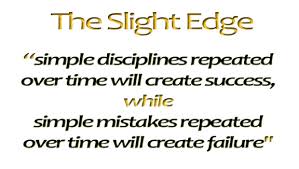If you have limited funds for improvements at your community, several factors need to be considered before making that investment. MDS can help you wade through the options, benefits and challenges to help determine the best decision for your needs. According to this latest article, dining is one area to be seriously considered.
by: Jason Oliva, as seen on SeniorHousingNews.com September 29, 2013
Senior living providers are making big bets on dining programs, and they’re seeing their investments and efforts pay off through higher occupancy levels and better response to marketing.
Dining services, along with caregiving and management style, have the greatest impact among service types on assisted living community resident satisfaction, according to a recent study from Western Kentucky University researchers.
The study, “Influence of Satisfaction with Services on Assisted Living Resident Satisfaction,” published in the Journal of Housing for the Elderly, found that mealtime has a greater impact on residents’ satisfaction, while apartment and facility characteristics were less significant.
For one senior living provider, an overhaul of dining services served as a mechanism for weathering the recession and boosting occupancy more than 5% post-economic downturn. Implementing certain dining strategies also helped 90% of providers increase resident satisfaction levels and improve marketability, according to a white paper from a national provider of dining services.
Trinity Senior Living Communities (TSLC) has felt the successes their dining programs have brought. The faith-based nonprofit provides senior housing in 34 communities in 25 states, with 20-plus communities providing food services.
Heavily impacted by the housing downturn in 2009, TSLC leaned on its dining services program to help drive occupancy in the years following.
In 2010, when TSLC refocused its marketing efforts to lead with food sales, the provider’s assisted living segment hovered around 85% occupied, according to Kelly Gasior, vice president of strategy, senior housing operations at TSLC. By 2013, the same market segment had reached an occupancy of approximately 90.4%.
The provider’s memory care segment also saw an uptick in occupancy from 2010 to 2013, jumping from approximately 88% to just above 95%. Gasior attributes the occupancy boost to the company’s marketing strategy that spotlighted TSLC’s dining services programs.
“Dining has been a really important piece of our success over the last several years,” says Gasior. “When we really started to turn our food program around, we settled that food was what we needed to lead with.”
TSLC realized they couldn’t do it alone, so in 2007 the nonprofit provider contracted with Unidine, a national provider of dining management for senior living communities, hospitals and business catering services.
Providing dining management services to senior living communities in 26 states, Unidine believes its fresh approach that embodies a culinary perspective is what has helped its clients see their occupancy levels grow, says Richard Schenkel, president, CEO and founder of Unidine.
“Communities have the ability to use dining programs as a marketing tool to drive new residents in,” says Schenkel. “Dining programs also help drive resident satisfaction and they help retain residents.”
A combination of dining strategies that can help senior living providers achieve occupancy goals include the use of fresh foods or ingredients, as well as choice in options, according to a white paper commissioned by Unidine that surveyed 65 senior services executives in independent living, assisted living, skilled nursing facilities and continuing care retirement communities (CCRCs) in 2010.
Of the 70% of survey participants who reported using a fresh food strategy and who also specified resident satisfaction as a goal, 92% reported that their strategies contributed to their success. Similarly, 95% of executives who used fresh foods and specified improved marketability and occupancy as a goal reported their strategies contributed to their overall success.
“If a provider is looking to drive occupancy, there’s only so many ways you can compete in the market,” says Schenkel. “People are recognizing that one dining room with one menu isn’t going to make it.”
Although such changes may result in increased expense, providers can balance cost increase in one area with strategies that reduce costs in others. For example, local sourcing of fresh produce reduces, or even eliminates, transportation to lower overall food cost, notes the white paper.
Additionally, food service management companies and group purchasing organizations have the ability to aggregate purchasing volume, participate in sophisticated networks of local producers and leverage management systems across their client portfolios to further drive down costs.
Utilizing fresh food in a seasonality approach can also lead to reduced costs, according to Gasior.
“The goal is to use the freshest food at the right time,” she says. “Strawberries in February are going to be more expensive when they’re not in season.”
Since food is an integral part of people’s health, wellness and satisfaction, live demonstrations from a community’s culinary programs can have an impact on resident attraction to a certain community, according to Darin Leonardson, director of hospitality and dining at Golden Living.
“The key is making it visual,” says Leonardson. “If you don’t display or showcase these changes, then you’re perceived as clinically-based. You need to transform staffs into chefs so that customers see them.”
Signage displaying new menu options or even spotlighting locally grown produce featured in the menu can let residents know what they’re eating is fresh and not processed or pre-packaged.
Providers even hold “open house” events for their dining service programs, inviting the neighboring community to try the food for themselves. It’s also a good way to attract prospective residents, says David Kane, vice president of senior living at The Mather, a continuing care retirement community (CCRC) in Evanston, Illinois.
“Recognition in the broader community becomes helpful from a marketing perspective,” Kane says. “The most effective way to increase or generate sales for the community is through the referrals from other residents.”
This brand of oral marketing passed along from one individual to the next can be advantageous to providers looking to strengthen occupancy, improve resident retention and satisfaction within their communities.
“Word of mouth can be of strong value,” says Schenkel. “It keeps residents happier and more satisfied in wanting to be at your facility.”
Implementing a dining service program into a community takes a team-based approach that extends all the way from corporate staff to dining and dietary personnel to help drive efficiencies, according to Gasior.
“Food is a huge piece of people staying well,” she says. “If people are eating, or not eating, that’s something dietary and dining staffs bring to us so that we can get on top of a solution. It takes a whole team of people, but you can’t exclude your dining team.”
Written by Jason Oliva
 Most, if not all, successful people will point towards consistent personal development and certain habits that are keys to their success. Do you engage in personal development? Reading or audio books are great sources for inspiration, motivation, creative ideas and sound advice. One book highly recommended is Jeff Olson’s The Slight Edge. This book tells you how to use all the personal development information and explains how small, daily habits make a huge difference. We have included links to various article that give you some habits that successful people engage in on a regular basis. Now, do not get overwhelmed trying to incorporate ALL these things into your daily schedule. Add one or two until it truly becomes a habit then look to add another one or two. It is all about small, daily steps not one huge leap. Also, see our previous blog on personal development for a kick start to your personal development library.
Most, if not all, successful people will point towards consistent personal development and certain habits that are keys to their success. Do you engage in personal development? Reading or audio books are great sources for inspiration, motivation, creative ideas and sound advice. One book highly recommended is Jeff Olson’s The Slight Edge. This book tells you how to use all the personal development information and explains how small, daily habits make a huge difference. We have included links to various article that give you some habits that successful people engage in on a regular basis. Now, do not get overwhelmed trying to incorporate ALL these things into your daily schedule. Add one or two until it truly becomes a habit then look to add another one or two. It is all about small, daily steps not one huge leap. Also, see our previous blog on personal development for a kick start to your personal development library.













